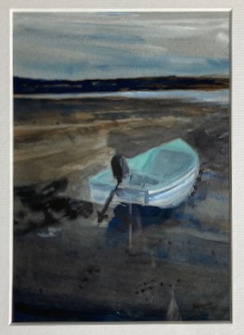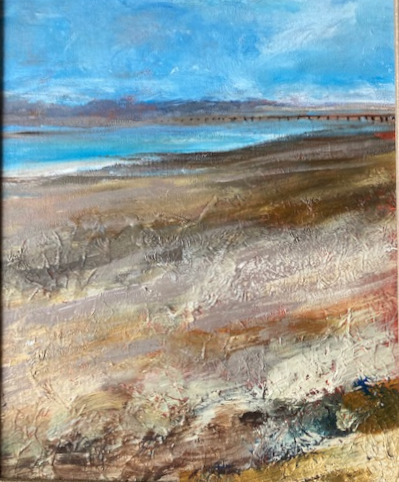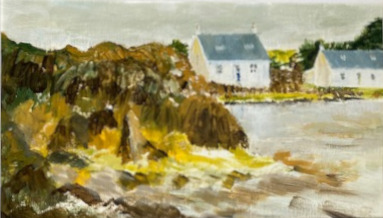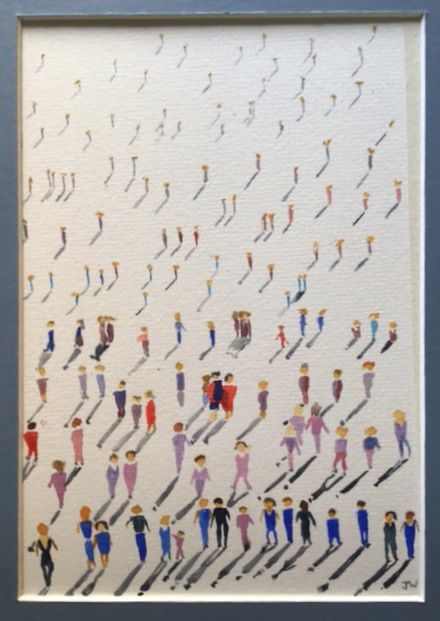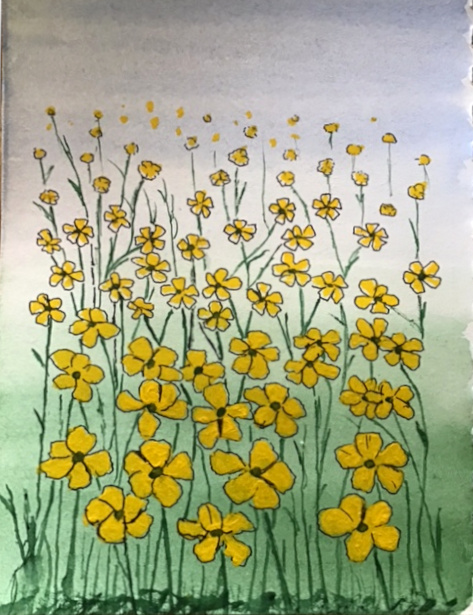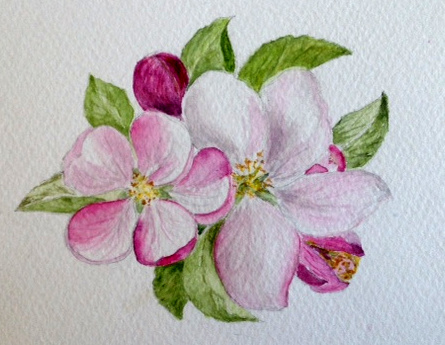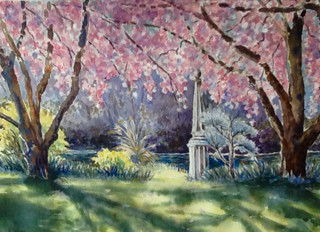Tracey made a return visit to demonstrate acrylic painting of a seaside scene. An enlarged image was projected onto the wall
She commenced with a blue/grey mix for the sky, applied with a flat brush. She added white to to the sky mix for the distant clouds, as illustrated.
Tracey painted layered horizontal blue greys with a smaller flat brush to create the sea, then blocked in the middle ground and foreground with a burnt sienna as a bright undertone to enhance the foliage to be applied.
After the sky paint had dried, Tracey applied white with a rough dry brush in swirling patterns.
Tracey then used a natural sponge to apply a dark green over the complementary orange ground.
Tracey added the chimney and windows and applied patches of burnt umber and Paynes grey with the flat of a pallet knife and rooflines and window features with the edge of the pallet knife as illustrated.
Rocks created with burnt umber, Payne’s grey and purple. In foreground, dark burnt sienna and dark green applied with scrapped pallet knife. A stipple brush used to apply yellow and greens and sponge to apply yellow ochre, lemon yellow and white to lighten the green gorse.
Tracey used the pallet knife to paint alternate dark and light for the steps and hand rails
In left foreground, dragged white to form grasses and in right foreground, red and yellow ochre dragged with knife.
Tracey applied a splatter of light colour using a toothbrush.
Painting at the end of the session.














































